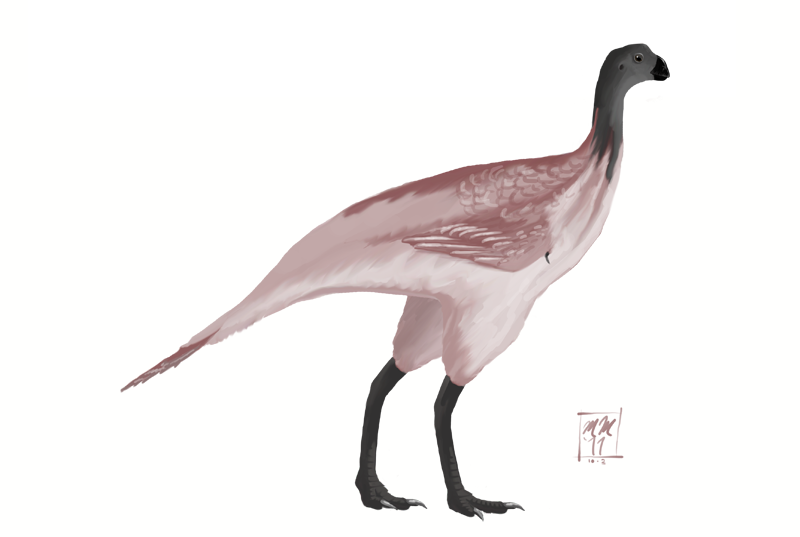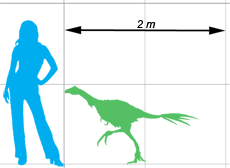home > natural history
Avimimus
portentosus
"portentous bird mimic"

Avimimus portensosus was aptly named, and not only in the sense Russian paleontologist Sergei Kurzanov intended. The name literally translates as "portentous bird mimic" (portentous in the sense of dramatically important), but it also has the ring of "portent" to it. Often overlooked, Avimimus was in fact the fist traditional, non-avialan dinosaur recognized to have had feathers. True, direct impressions of true feathers didn't come until nearly twenty years after its 1981 discovery, in fossils of its close relative Protarchaeopteryx (described in 1997). However, Kurzanov did note the presence of a strange ridge along the back of the arm, as well as quill knobs, the anchor points for large wing feathers in modern birds. Because of this, and a suite of other bird-like features not seen before in dinosaurs, Avimimus became the first dinosaur commonly depicted with a full compliment of feathers. In fact, the tail of Avimimus has not yet been recovered, and early illustrations depicted it as having no bony tail at all, in the style of modern pygostylian birds. However, due to characteristics of the hip, it almost certaily had at least a short tail, possibly capped by a fan of feathers as seen in its earlier relatives, the caudipterids.
As in caudipterids, I've drawn Avimimus with a large fan of primary feathers. Some other unique characteristics of Avimimus are the relatively small wings and the small 'dome' on the skull above the eyes. Another unique feature, hard to see in the image here (though I restored it as best I could at this scale), is the beak, which bore coarse serrations along its tip, sort of like pseudo-teeth.
Avimimus comes from the Nemegt Formation of Mongolia, which at the end of the Cretaceous period would have been sort of a wetter, more forested version of the arid, sandstorm-prone dune fields of earlier Mongolian habitats, when relatives like Oviraptor lived. The presence of Avimimus here, and its similarity to caudipterids (not to mention its long toes, usually indicative of a marshy habitat), may mean that Avimimus and relatives were a wetland-loving bunch, unlike the desert-dwelling oviraptorids. Evidence from footprints and bonebeds in the Nemegt shows that they were gregarious, lifiving togeher in large flocks like some modern wetland birds. It is easy to imaging hundreds of these birds dabbling together in marshy waterways for invertebrates and other small animals. I chose to restore it with white and pink plumage similar to modern birds, such as spoonbills, flamingos, and ibises, that exhibit this type of behavior.
.
Image Details:
Media: Graphite, digital coloring in Adobe Photoshop CS5 using WACOM Graphire 3
License:
ALL RIGHTS RESERVED
DESCRIPTION
Length: 1.5m (5ft)
Weight: 10.5kg (23lbs)
Location: Nemegt Formation, Mongolia
Time: Maastrichtian age, Late Cretaceous (70 Ma)
CLASSIFICATION
Kingdom: Animalia
Phylum: Chordata
Class: Stem-Aves
Order: Caenagnathiformes
Family: Avimimidae
Genus: Avimimus
Species: A. portentosus
SYSTEMATICS
Sauropsida
Diapsida
Archosauria
Ornithosuchia
Dinosauria
Theropoda
Coelurosauria
Maniraptora
Oviraptorosauria
